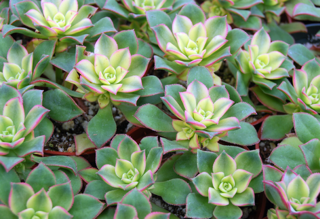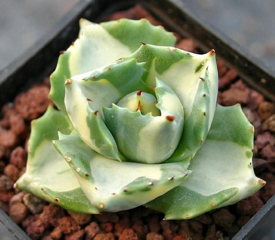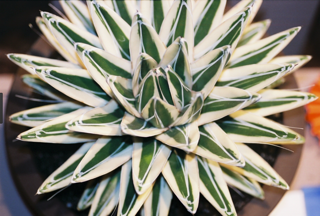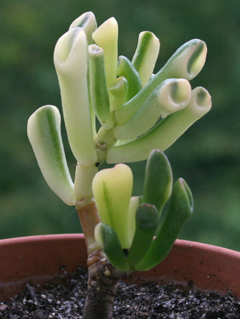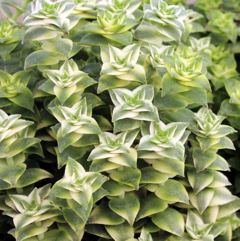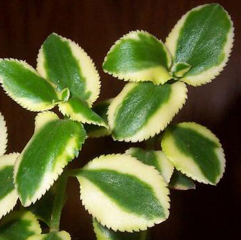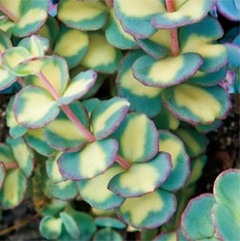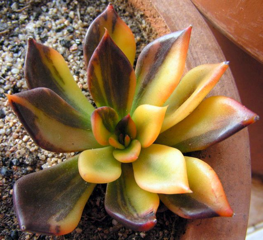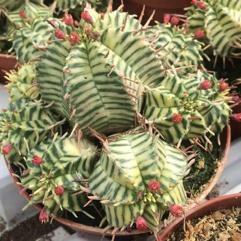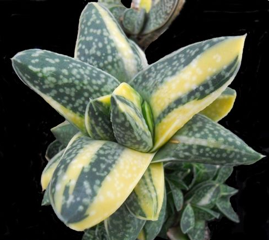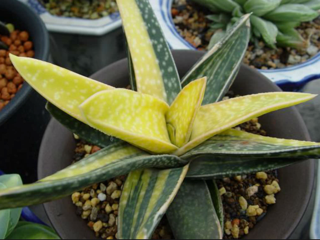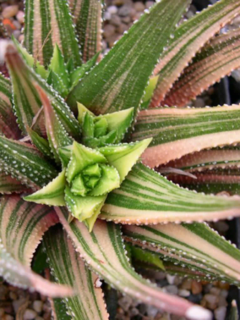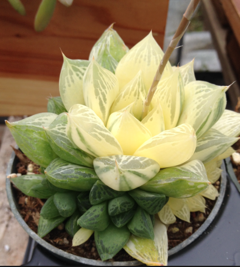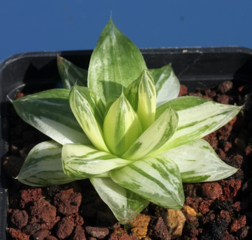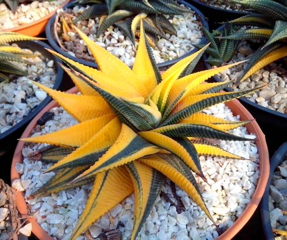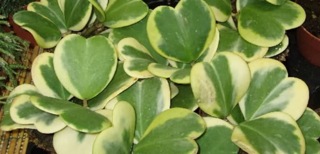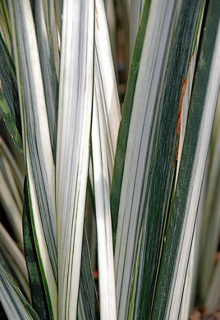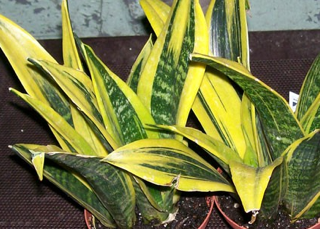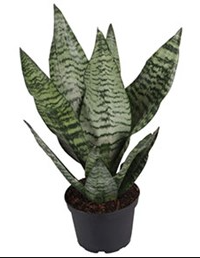Submitted by: Jim Tanner
All variegates are mutants. Something has gone wrong with the cellular structure of the leaf or stem growth tip (apical meristem) of the plant. The three most common mutations are variegates, crests, and monstrosity. Two or even all three forms are sometimes combined in a single plant.
Variegation is known in most plant families, and variegated plants have a place in most gardens. The bright yellow and white of variegated foliage adds pattern and rhythm to many herbaceous borders. In succulent plants variegates are generally separated from normal plants, and compete against other variegates. This puts them on an equal footing. Variegated plants grow slower and are generally smaller than non-variegates of the same species. The yellow and white areas do not have chlorophyll, making the growth slower. The colored areas are also generally weaker, and more susceptible to fungus, sunburn and other defects. A large well grown variegate of any species is truly an achievement.
Great Variegates
Agave – There are several forms of variegated Agave americana. There are forms with a green center stripe and yellow edges, a yellow stripe and green edges, a green center and white edges, a white center and green edges, yellow centers and crinkled edges, random yellow and green banding, and dozens more. Other species of Agaves have also produce variegates, with the same variety of variegation.
Cacti – variegates can be found in many genera. Gymnocalycium are the most often seen, but some columnar variegates and some Ferocactus variegates are also common in cultivation. The odd variegate appears in many seedling batches. Variegated Turbinicarpus, Astrophytum, Matucana and Ariocarpus have been found. Many of these are artificially propagated by grafts. The famous ‘Red Caps’ and ‘Yellow Caps’ are Gymnocalycium or Lobivia variegates that have no chlorophyll at all, and live only by being grafted onto a root stock. These are harder to grow well than they appear.
Sansevieria – There are dozens of named and unnamed varieties. Look for “Bantel’s Sensation, Futura, Silver Moon, Silver Princess, and variegated varieties of some of the cylindrical forms. Unlike normal Sansevierias, these can be difficult to grow. They will not tolerate cold and wet conditions.
Gasteria – The Japanese have made an art of Gasteria and Haworthia variegate cultivation. Look in the 2000 CSSA Journal for just a sampling of the wonderful cultivars. Miniature white species, yellow species, even the occasional pink can be found.
Haworthia – “Gray Ghost” is a Haworthia retusa variegate. There are several Haworthia limifolia variegates that look as if they were painted with mustard. All are beautiful.
Euphorbia – A number of columnar variegates are available, Euphorbia ammak, being the one most often seen. There are also some cristate and monstrose variegates as well.
Tom Glavich
